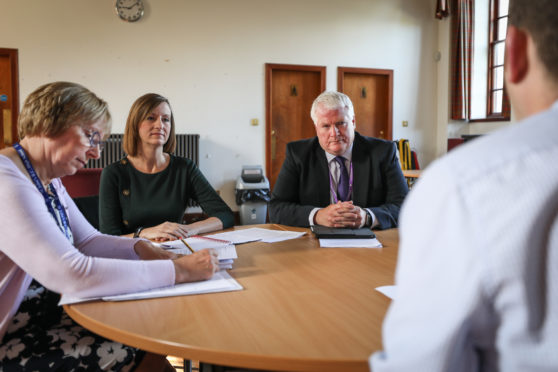Education in Dundee should not just be judged on exam results alone, it has been claimed.
Paul Clancy, executive director of children and families services with Dundee City Council, said the introduction of new “learning pathways” for pupils means it is not possible to judge success solely on the qualifications children obtain in school.
He said pupils in the final three years of high school now have far greater choice of what and how to study than was available a decade ago.
These include Foundation Apprenticeships, which see pupil attend Dundee and Angus College and take part in work experience programmes, as well as having the chance to take vocational qualifications in subjects such as child and early years care, tourism and hair and beauty.
Many of these course are being delivered in anticipation of what the future demands of Dundee’s job market will be.
Mr Clancy said while Highers remain an important benchmark, schools also have a responsibility to teach pupils life and work skills.
He said: “Parents might have sat Standard Grades or grandparents sat O grades, but they were in a situation where maybe 55% of pupils stayed on past 16.
“Now almost all pupils stay on, it’s a completely different experience.
“I don’t think focus on attainment is misguided but what is important is we keep in mind the breadth of work that goes on in schools.
“These are statistical measures that cover certain areas but not the totality of everything that is going on.”
He added: “We’re not backing off from attainment being a very important factor but you have to look across the totality of young people.
“We’ve got people with significant additional support needs. It won’t matter to them if they’re sitting a Higher, what matters is we’re giving them the literacy and life skills they need.
“The work of King’s Park, where there are 200 people, is not reflected but it’s an important thing we do.
“Attainment is an important thing but not the only thing we have to consider. Sometimes attainment doesn’t capture everything.”
Mr Clancy added: “The key point is preparing young people for something positive in future. The most important thing for me is children being safe, resilient and moving on from school into something that takes them forward into a career.
“Part of that is range of qualifications, but just as important is a range of skills.”
He said belief in the “linear path” of exams, passes and a place in university is “an old way of thinking”.
Hundreds of pupils from city high schools have also started classes at D&A College this month and qualifications, and skills they learn there are not included in results tables.
Pupils who complete Foundation Apprenticeships are also guaranteed a place at college if they decide not to go straight into the workplace.
Julie Grace, director of curriculum and attainment at D&A College said pupils can even obtain HNCs while still at school.
She said: “We’ve got 600 pupils starting in June, almost a 50% increase on last year.
“Pupils come to college for two afternoons a week. It’s about having the right learning pathway, it’s no longer about eight Nationals or five Highers.”










